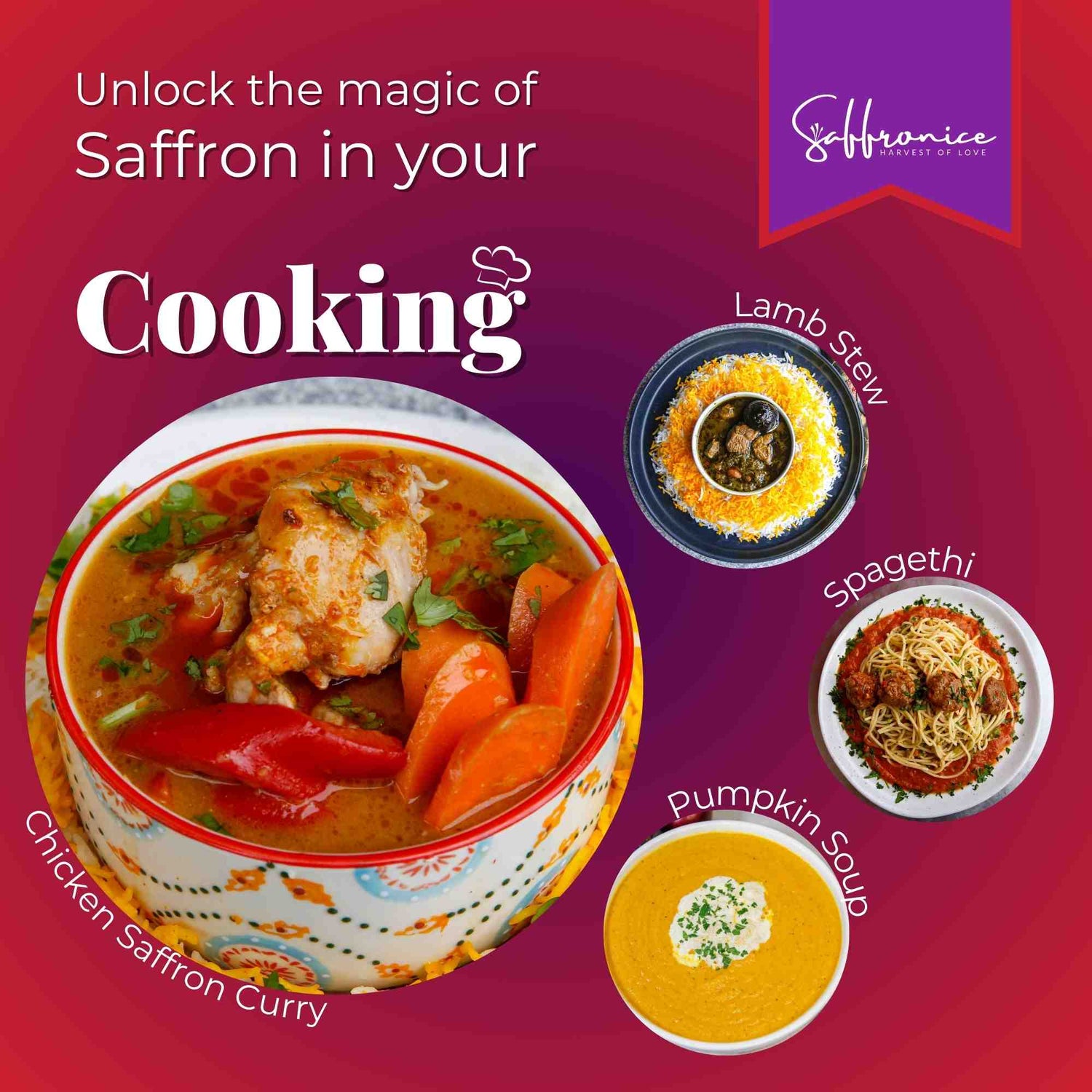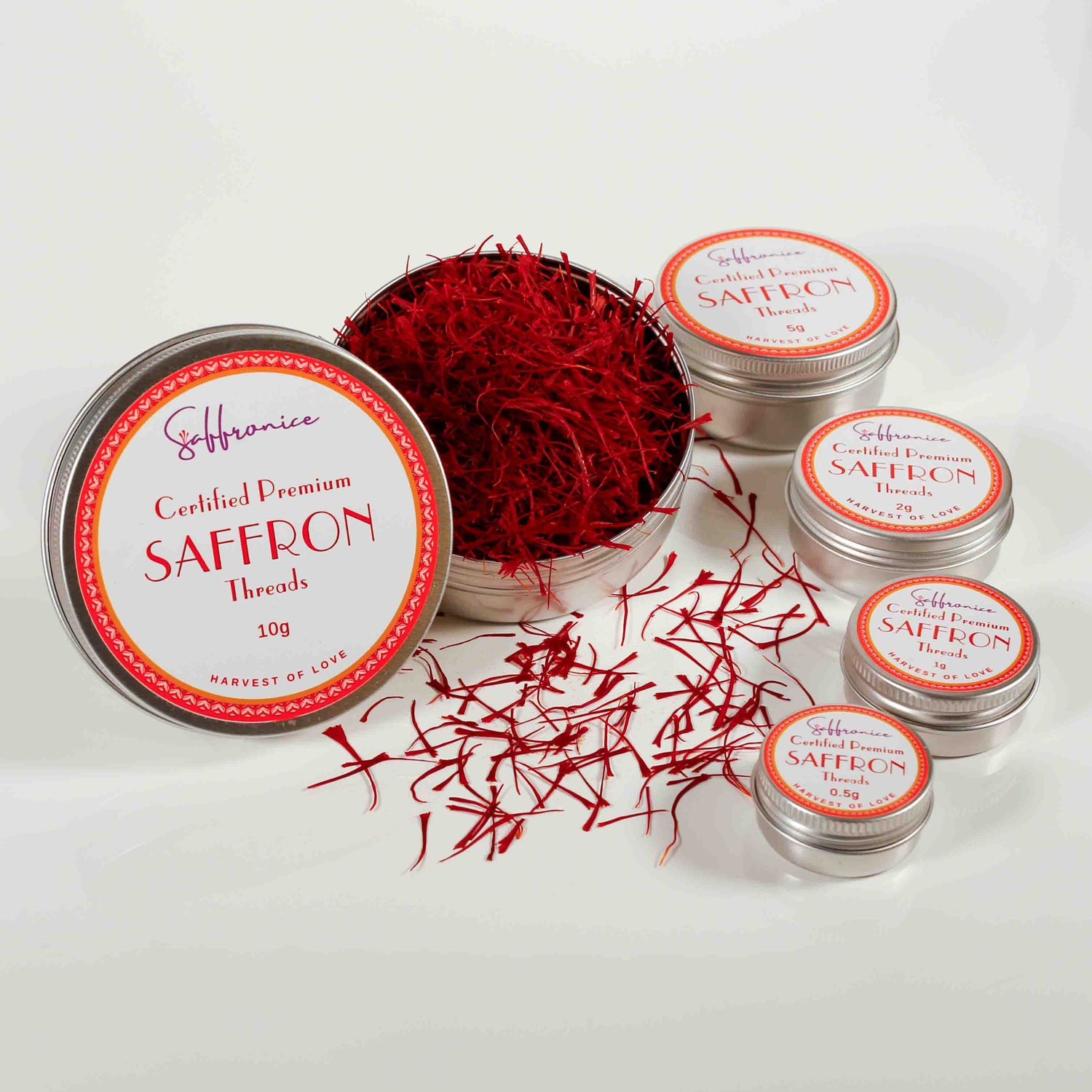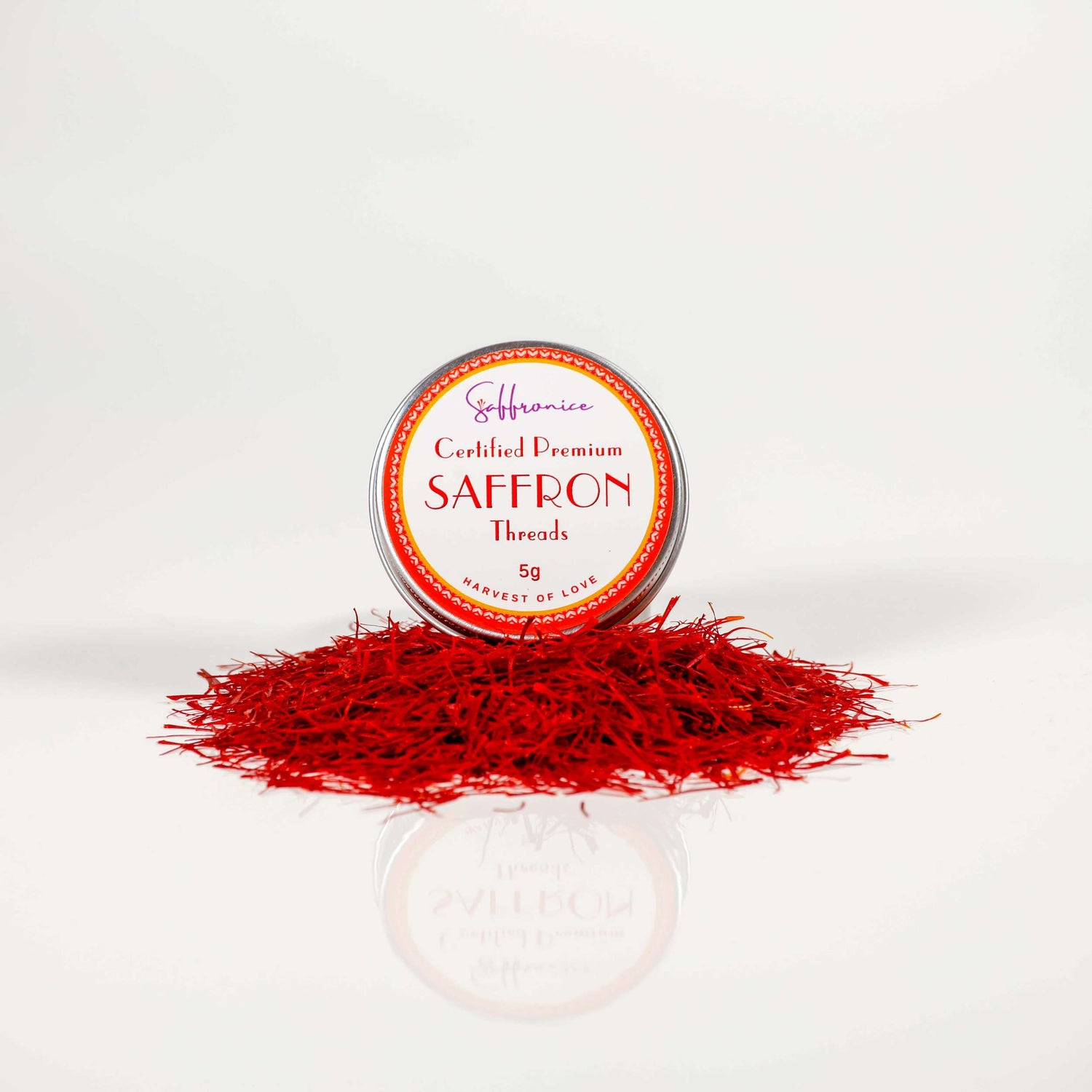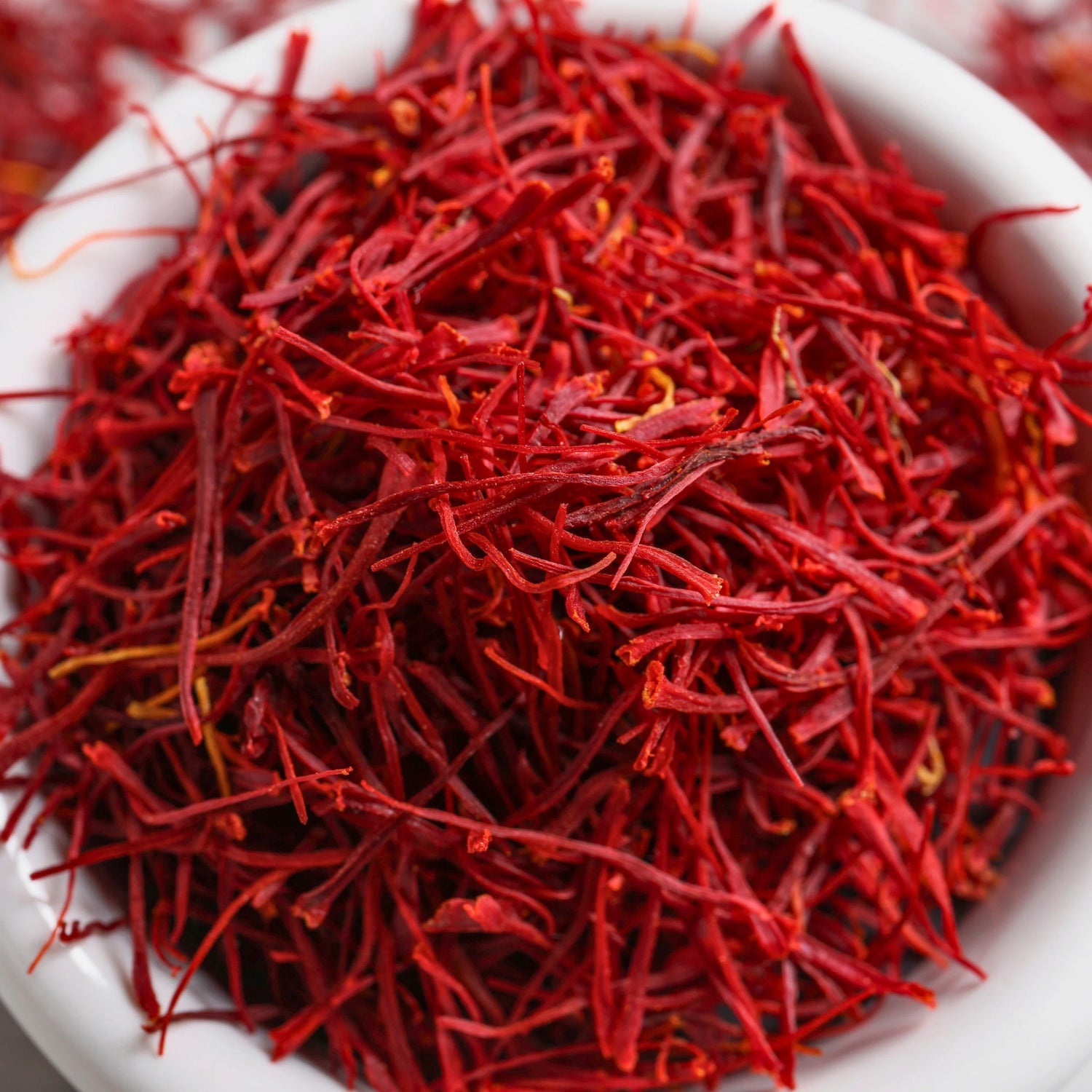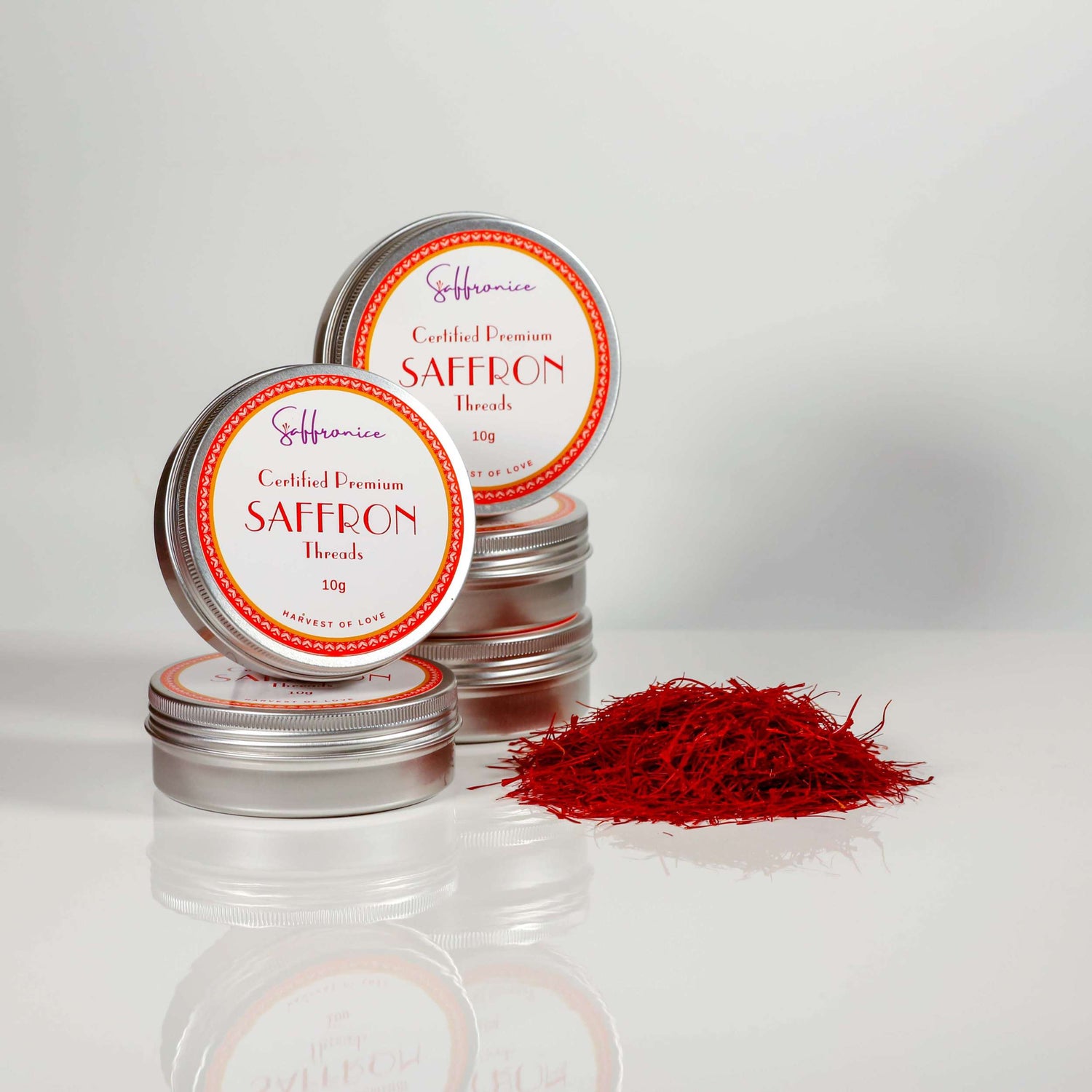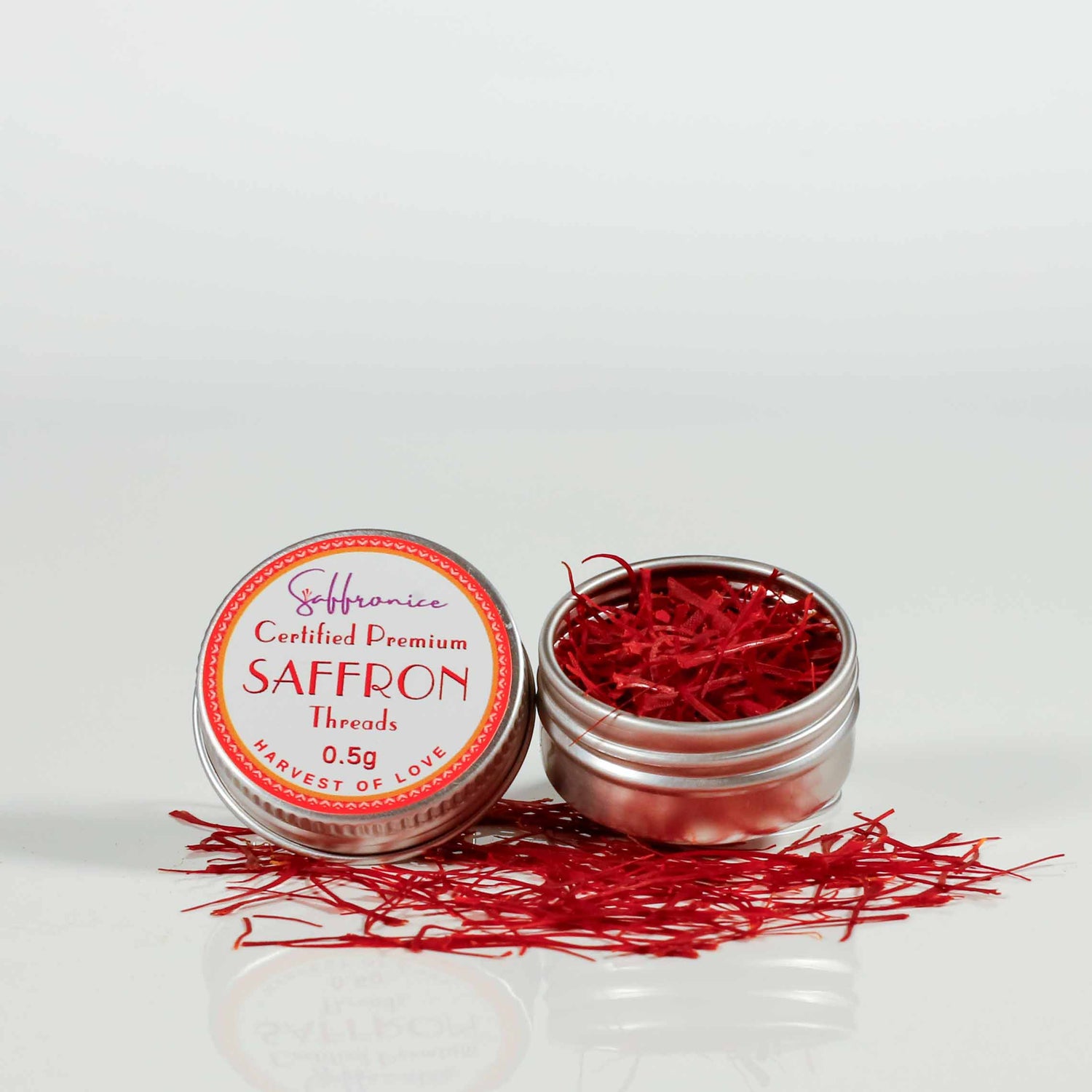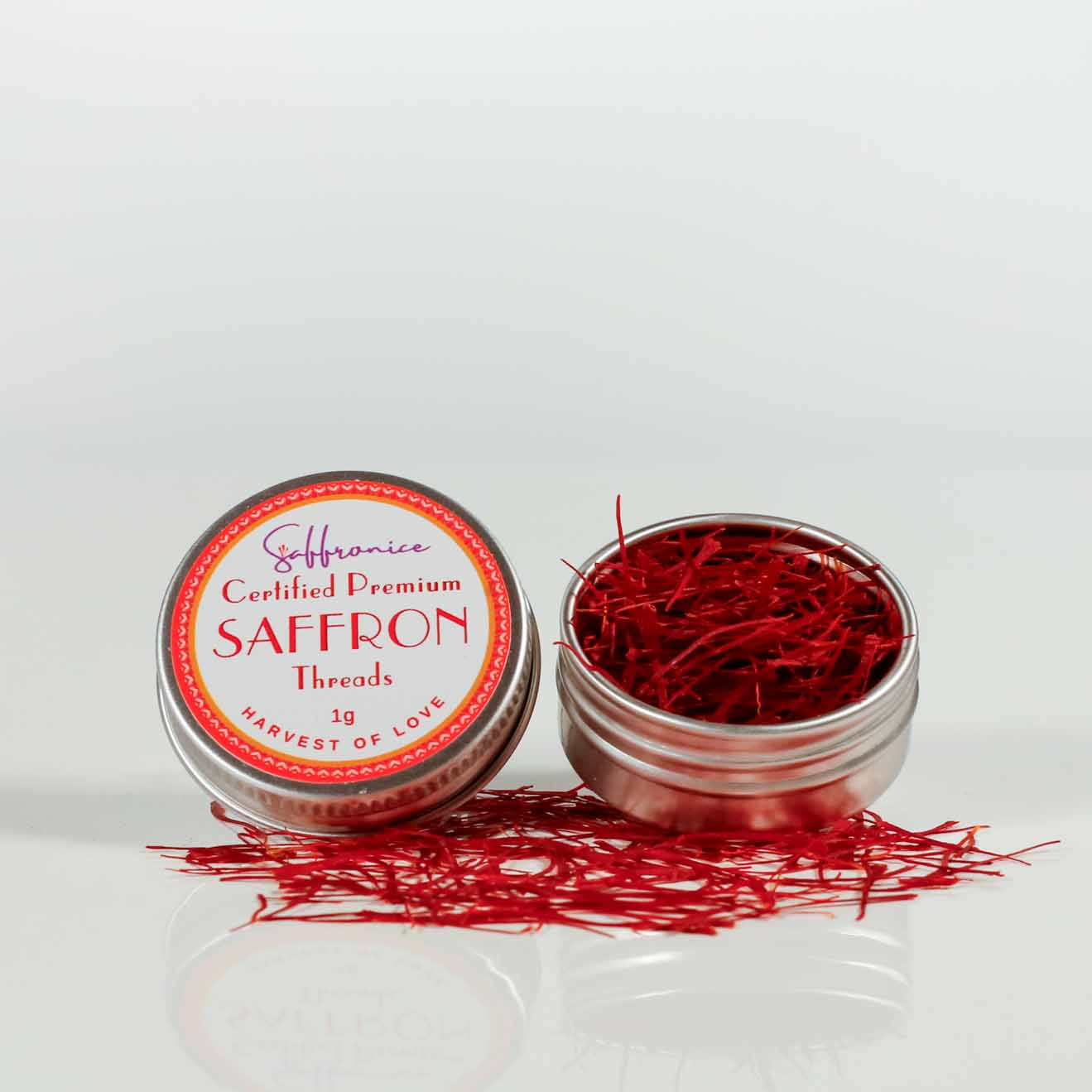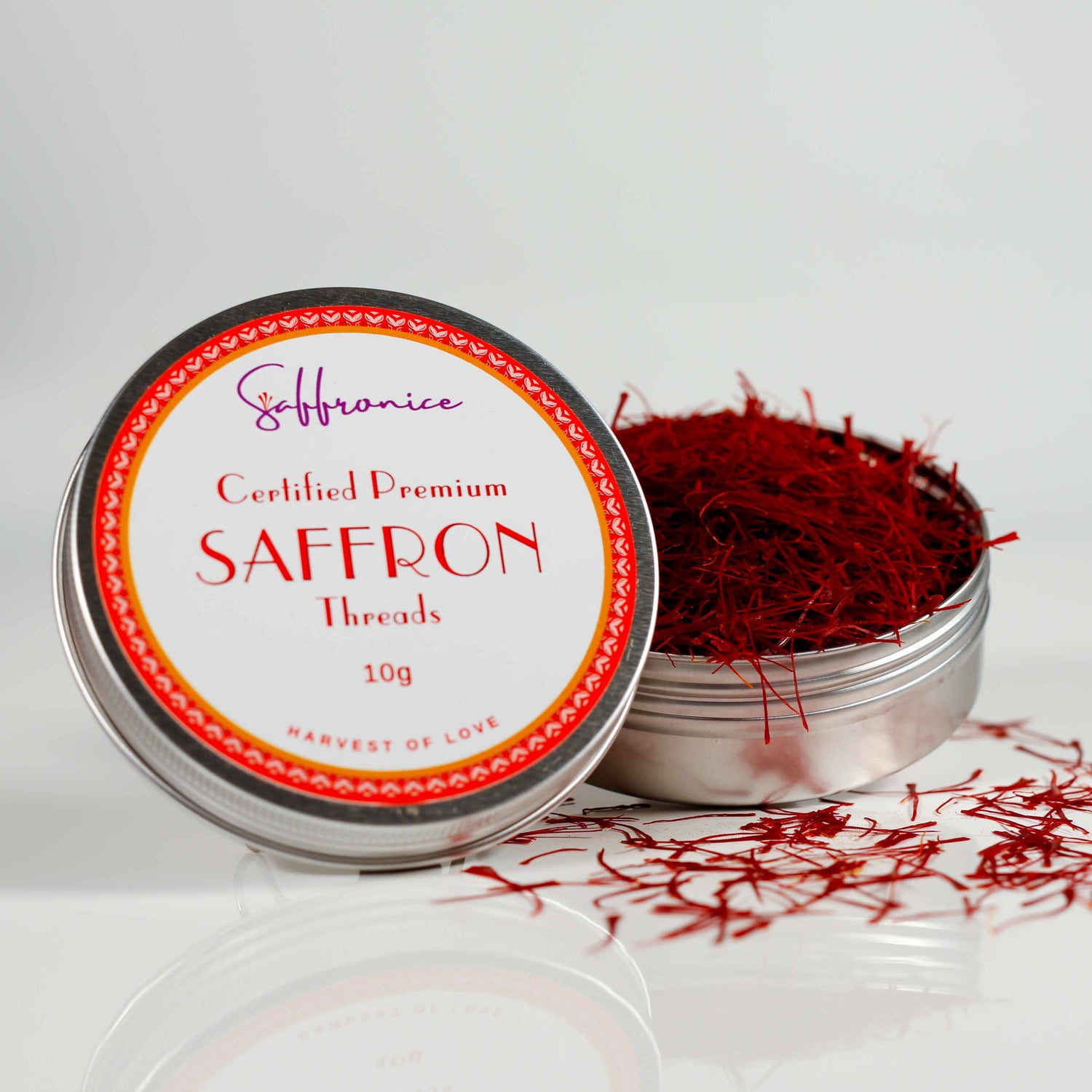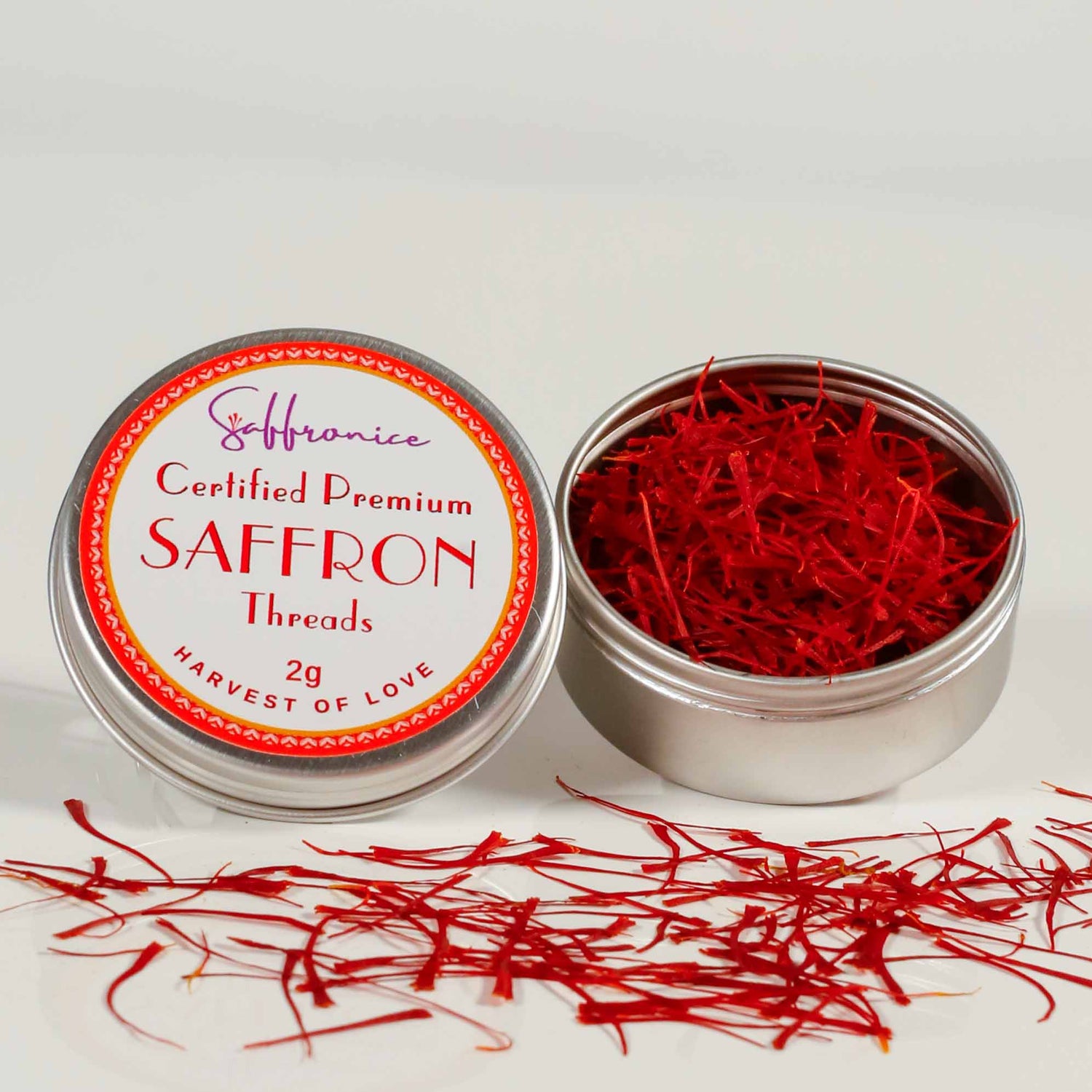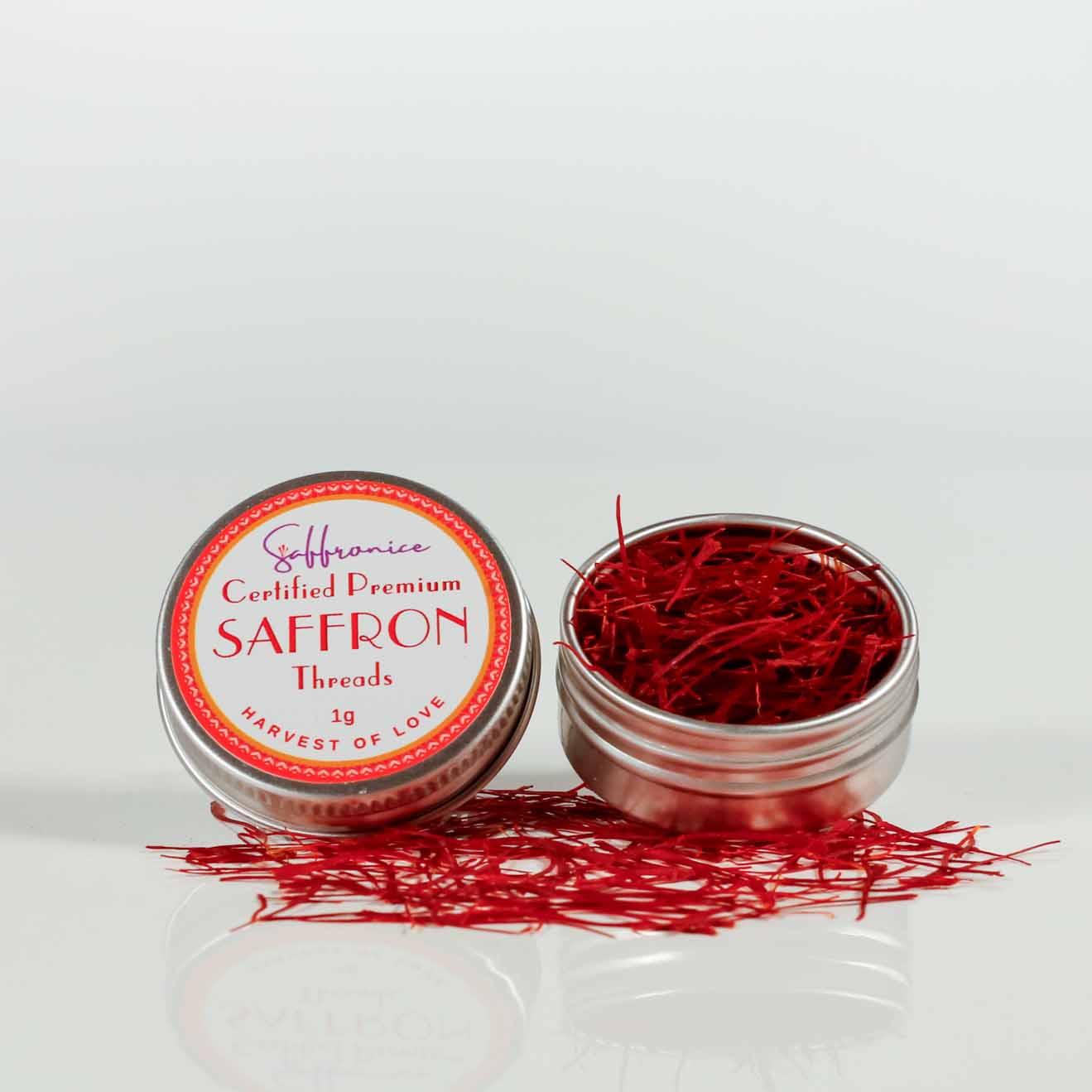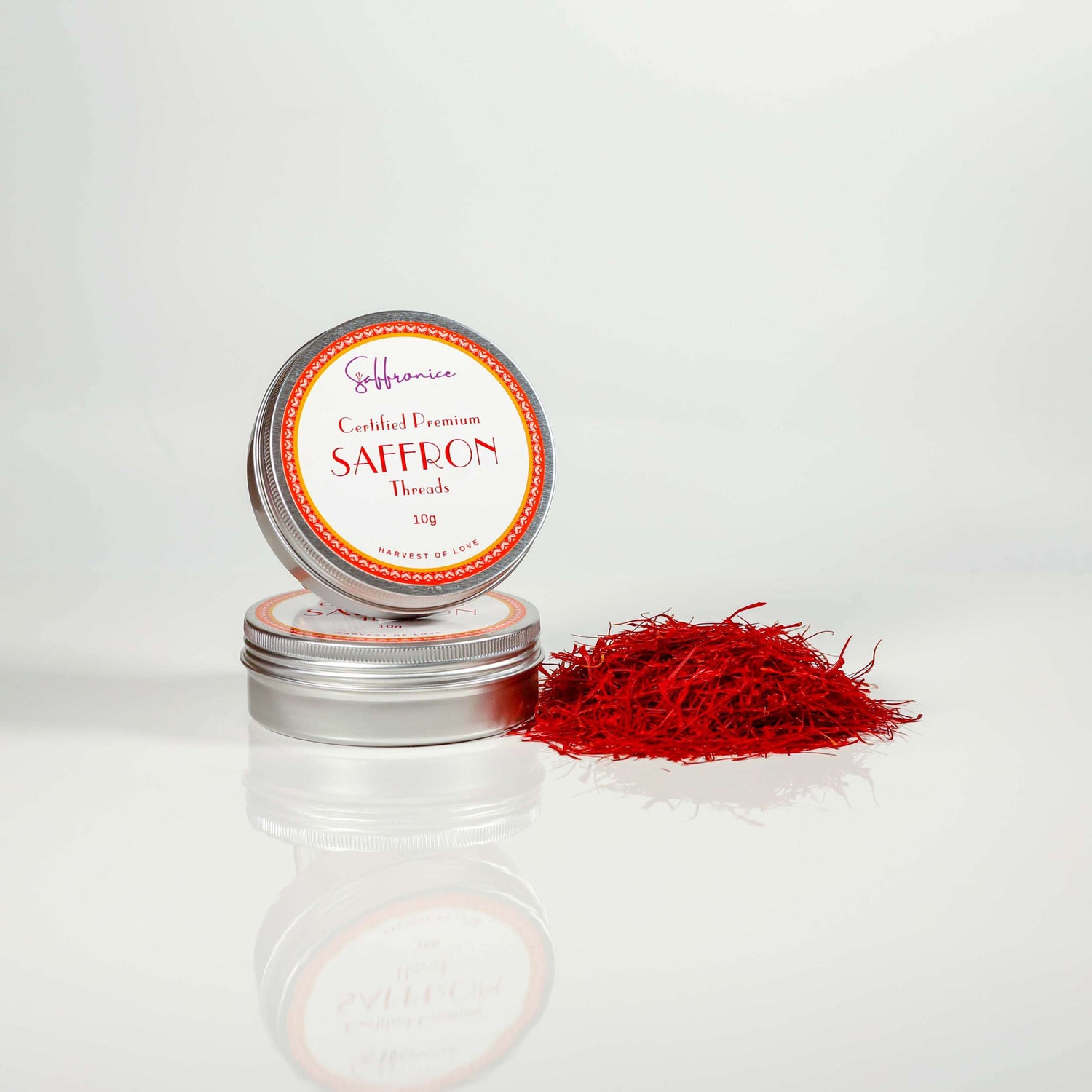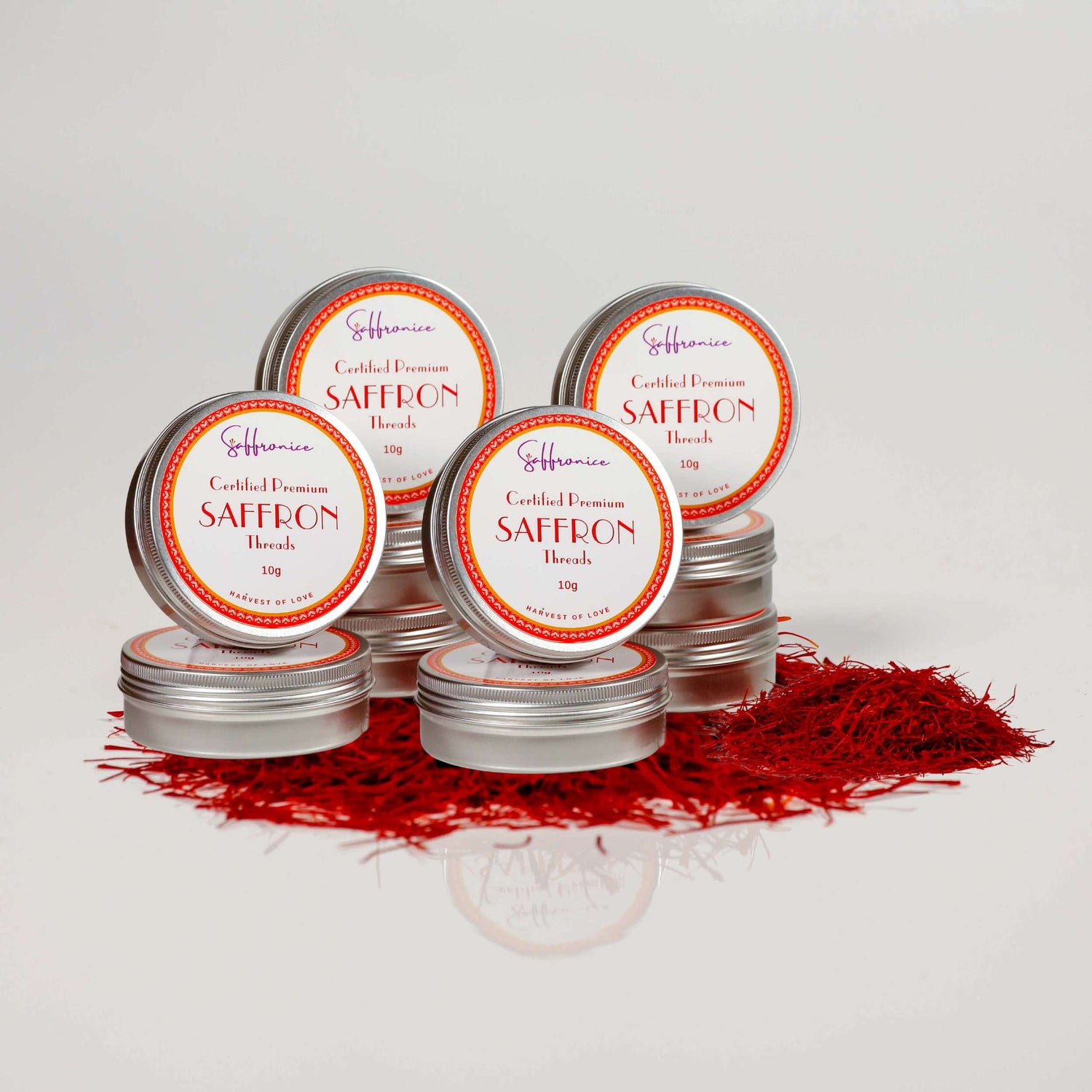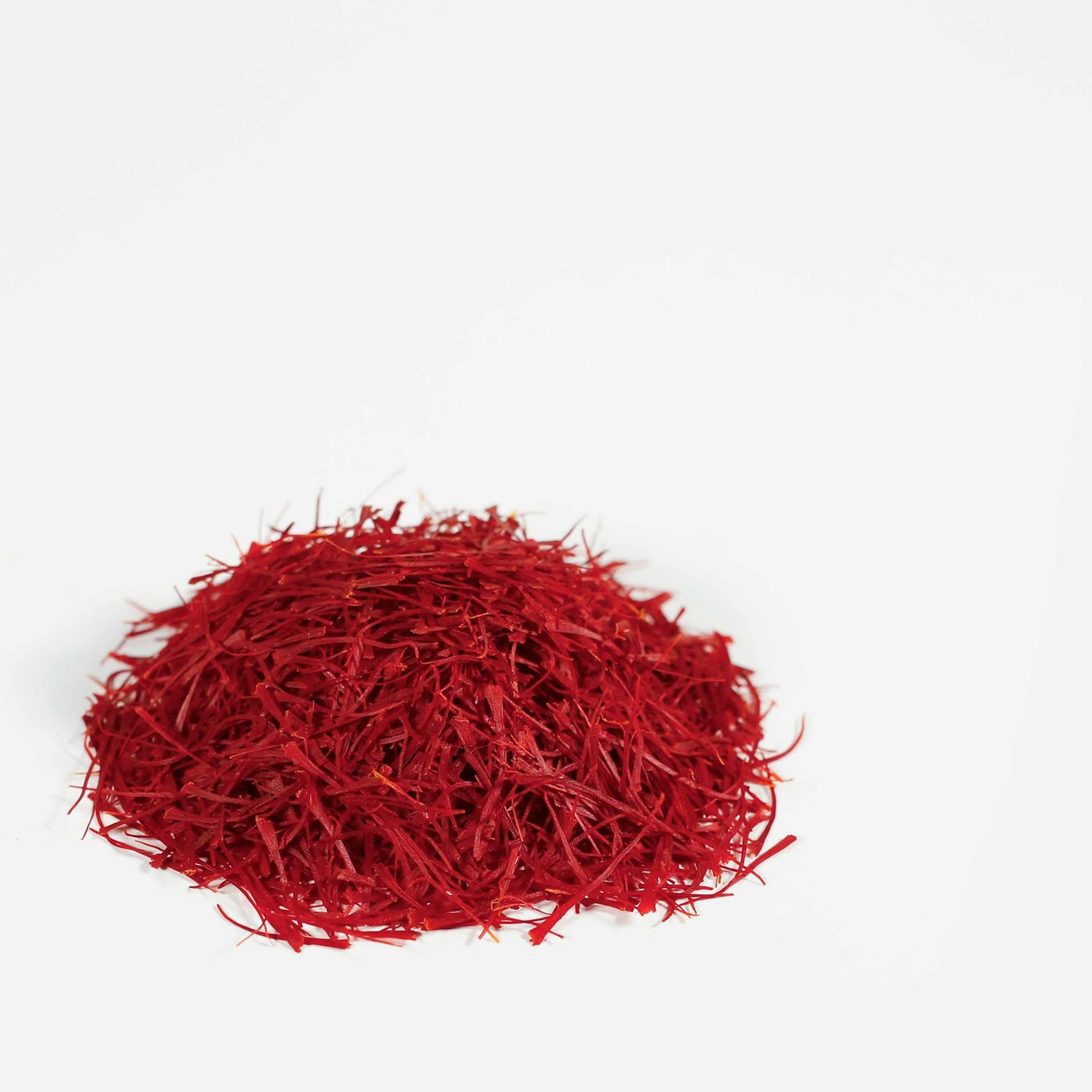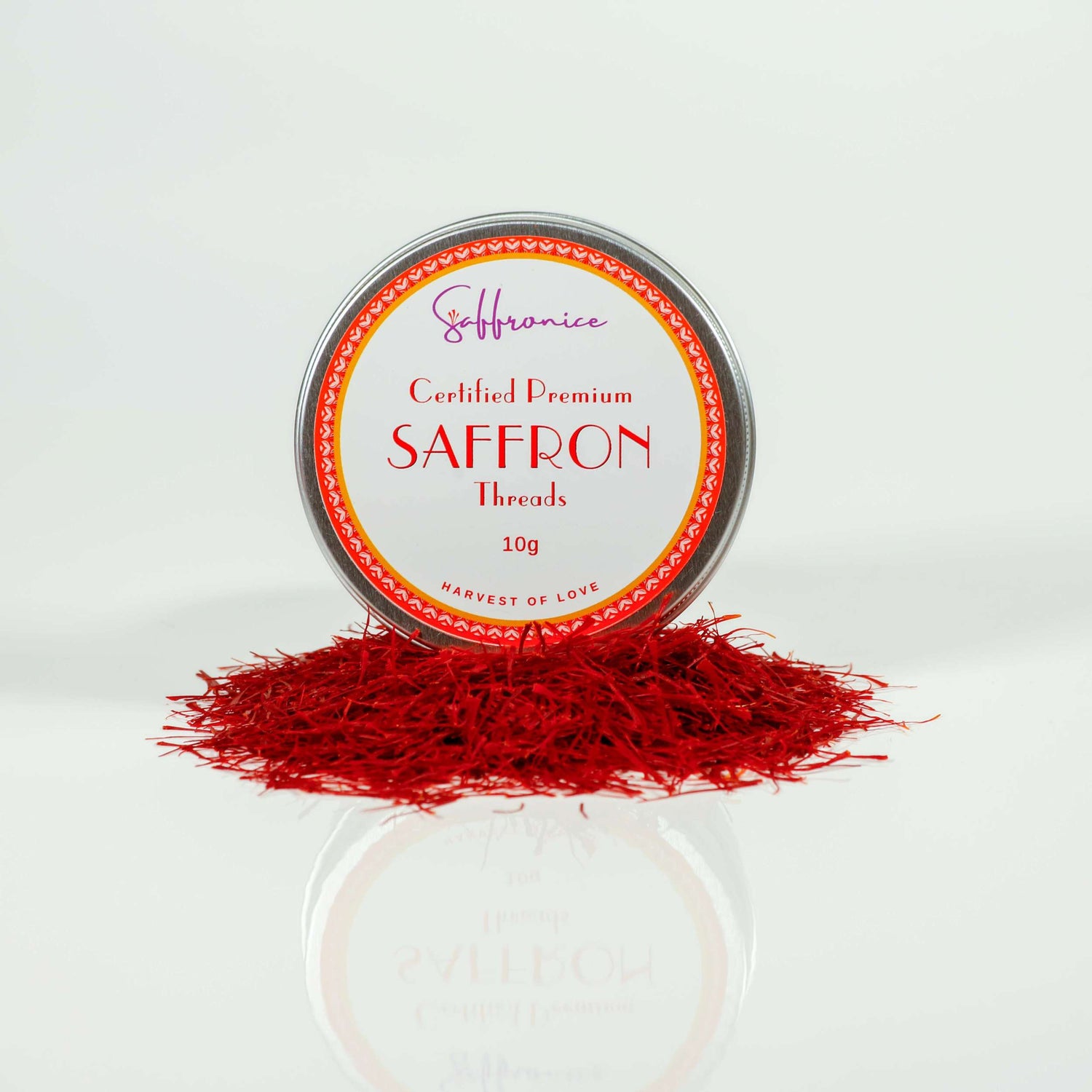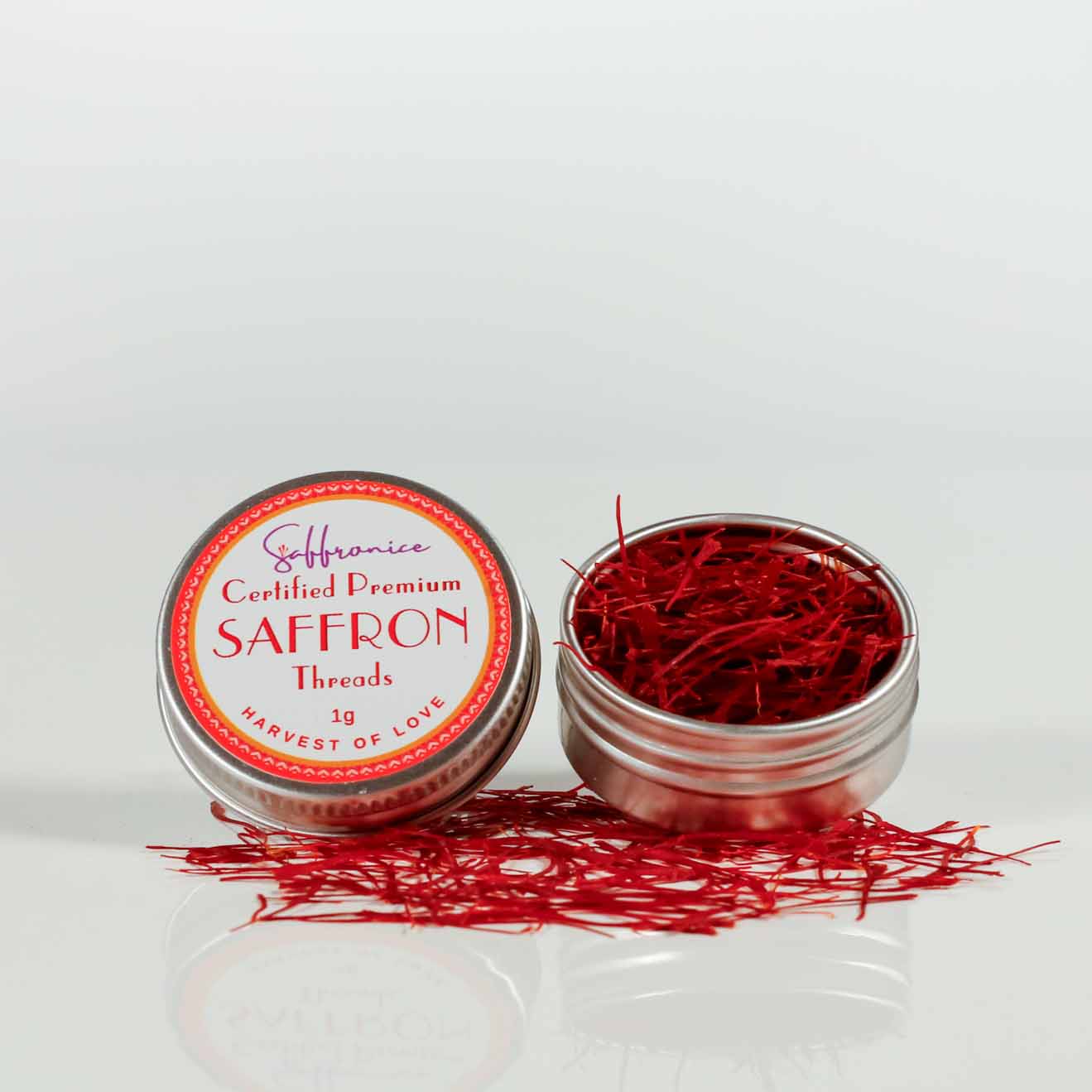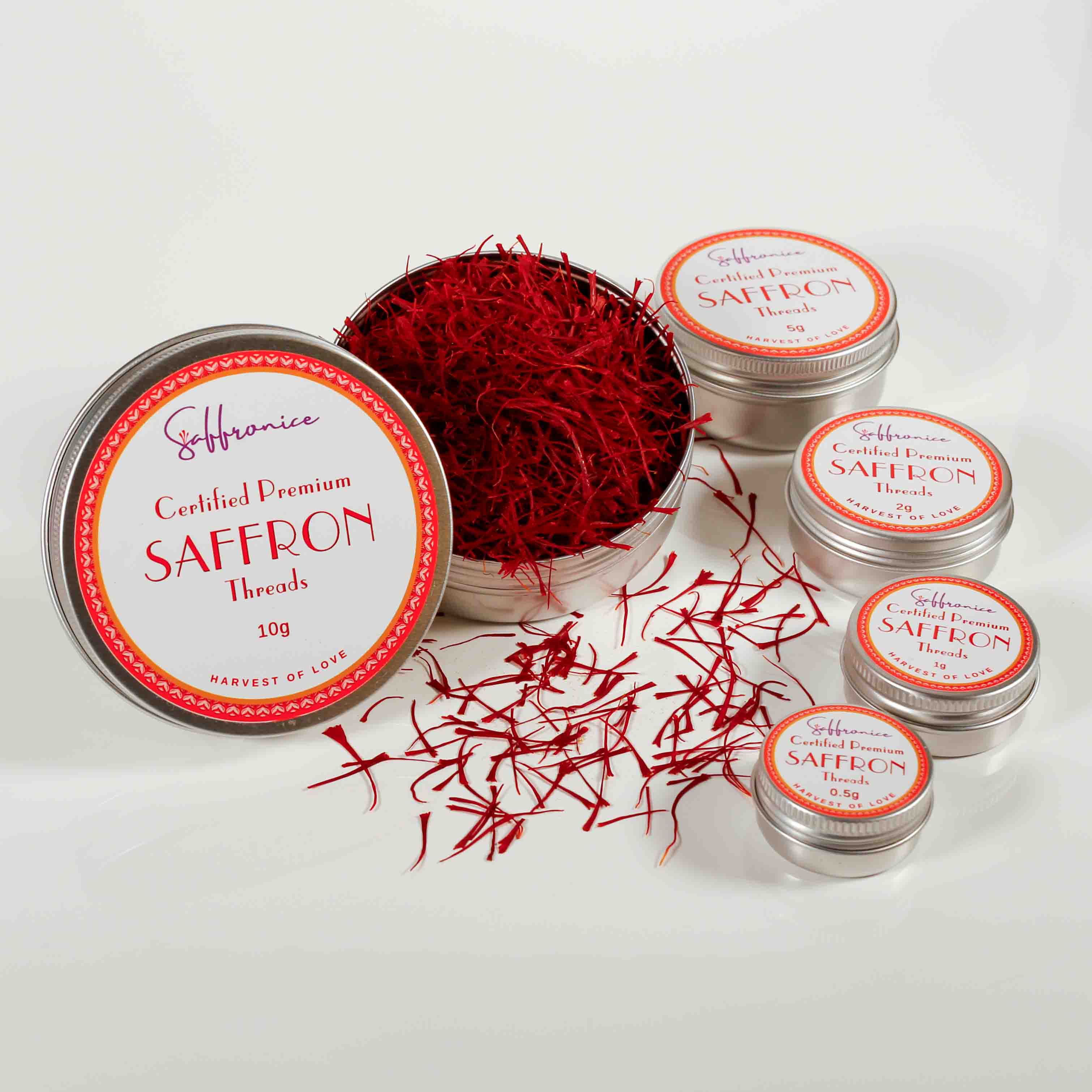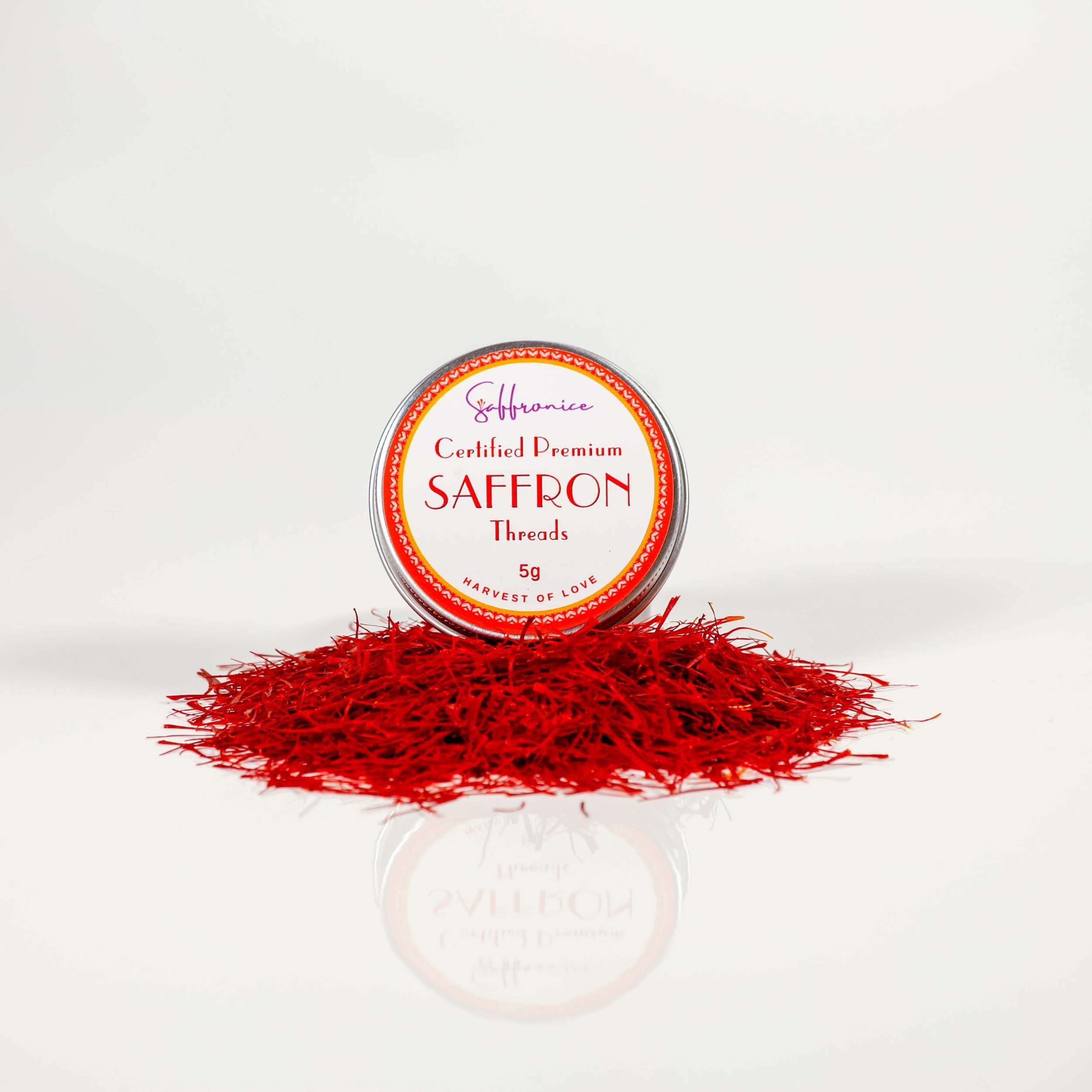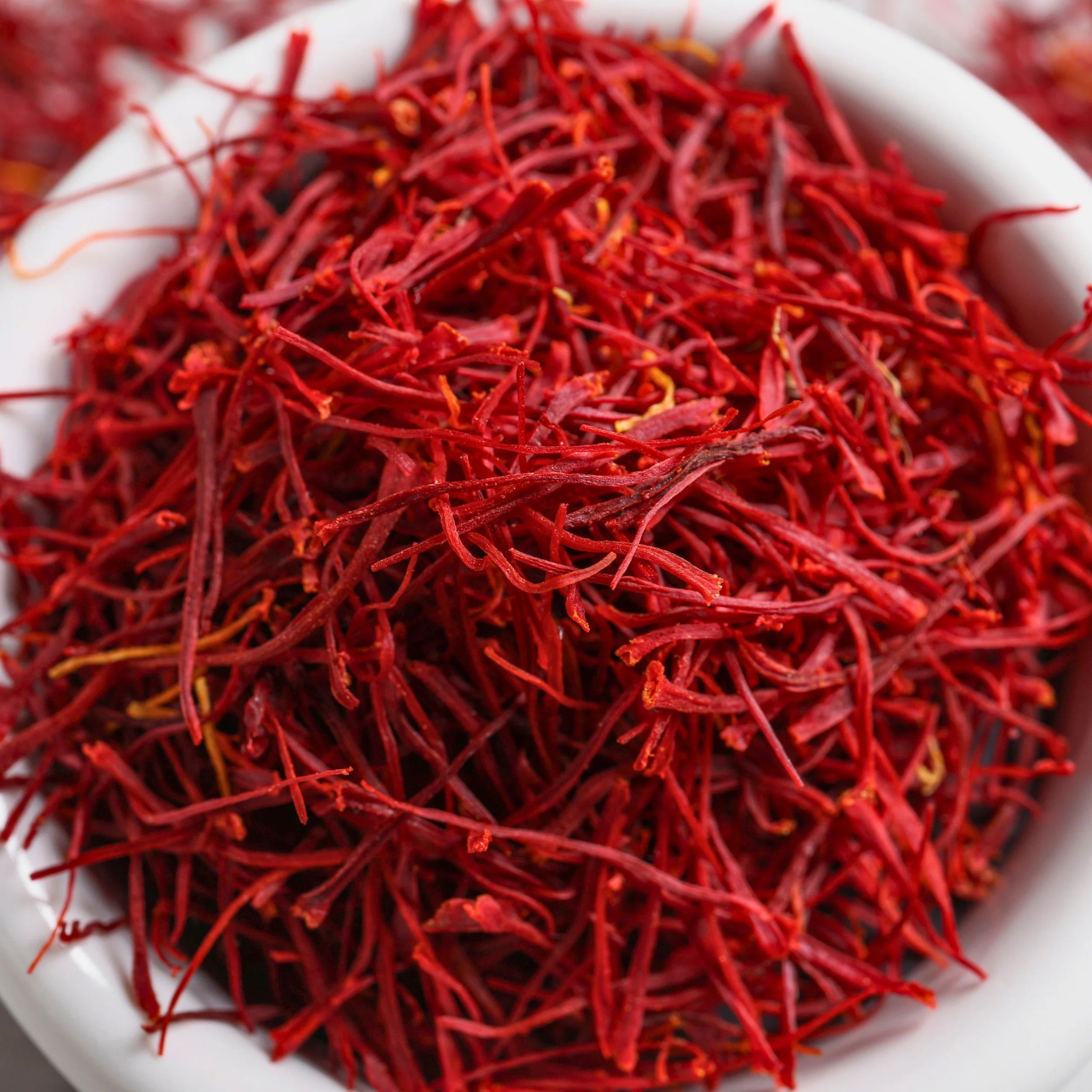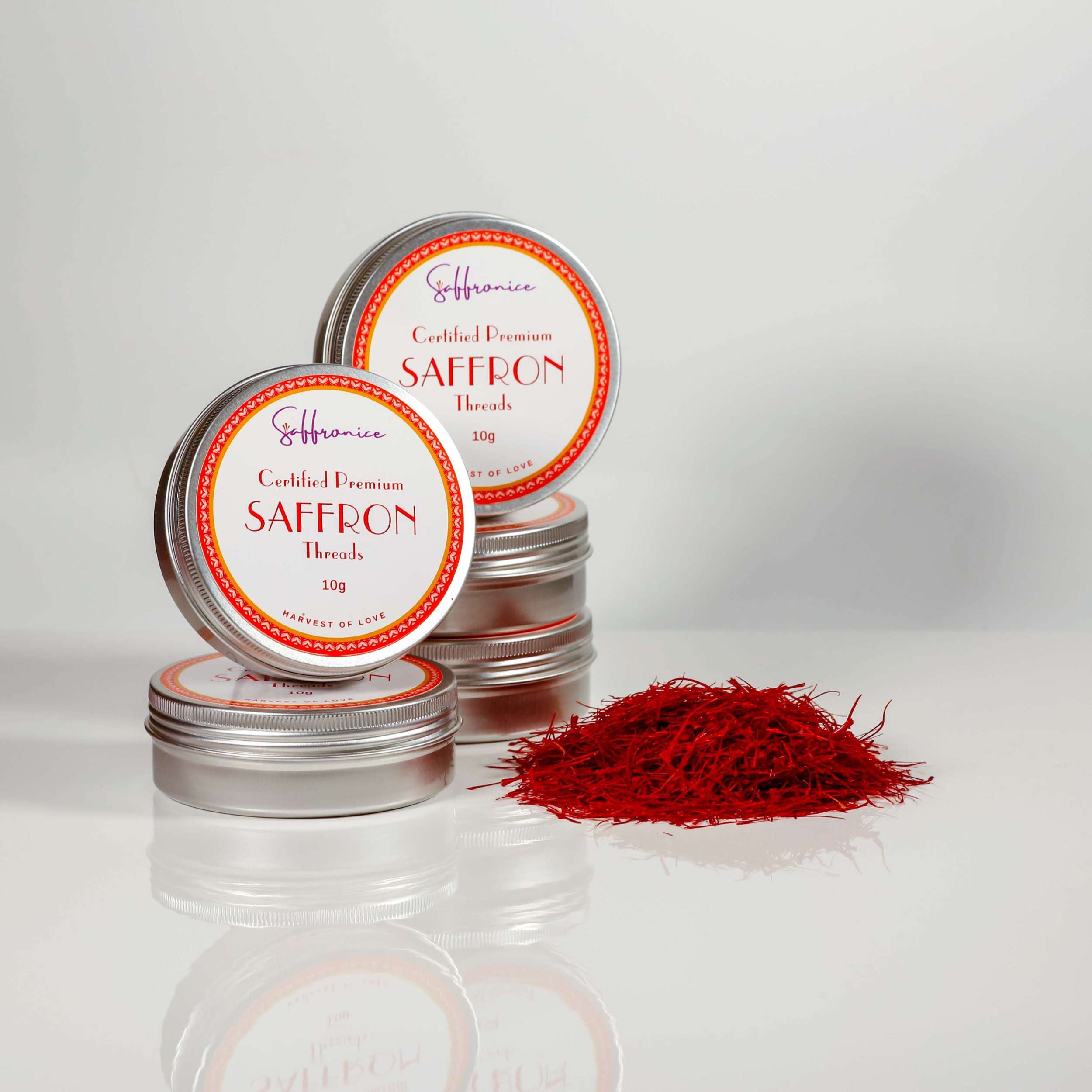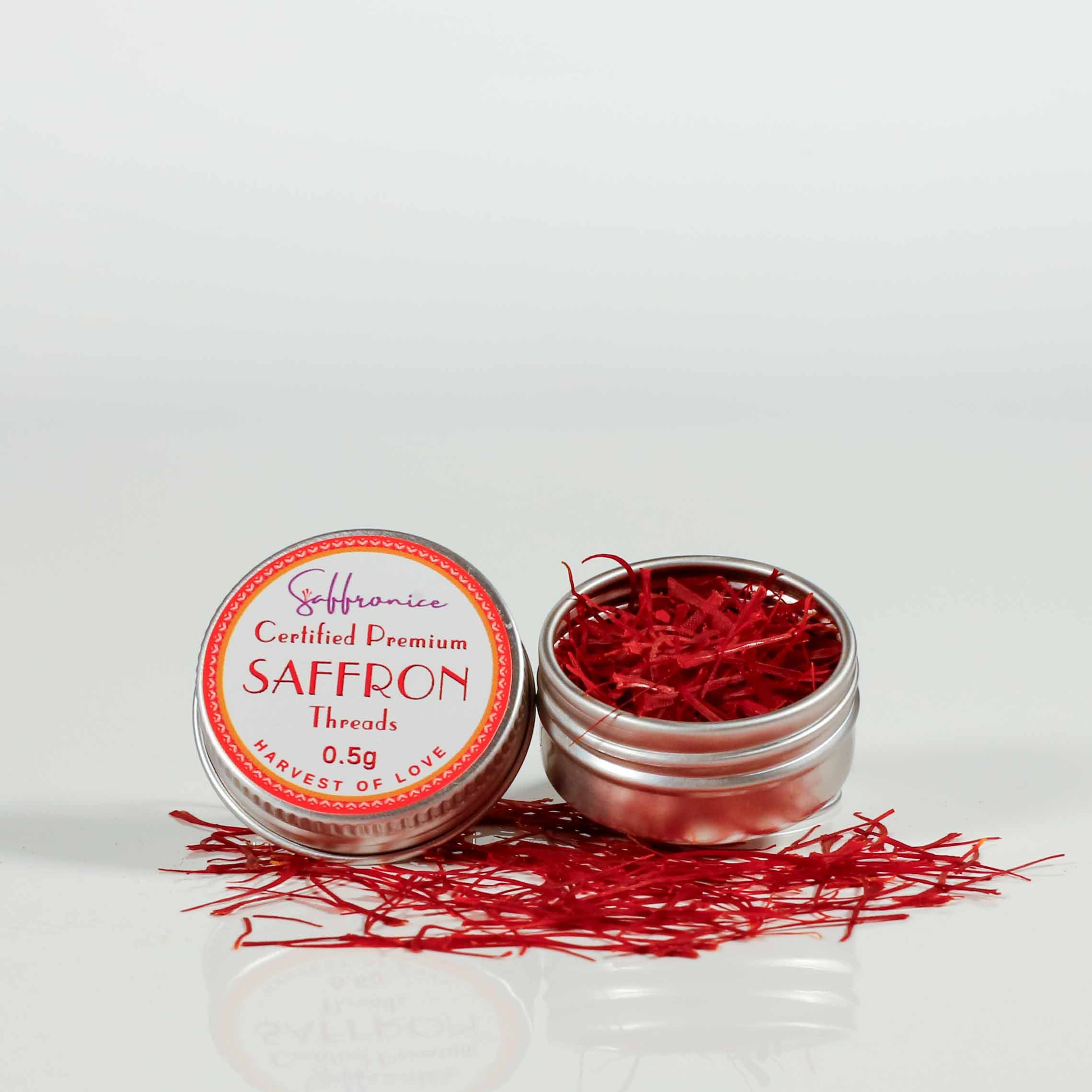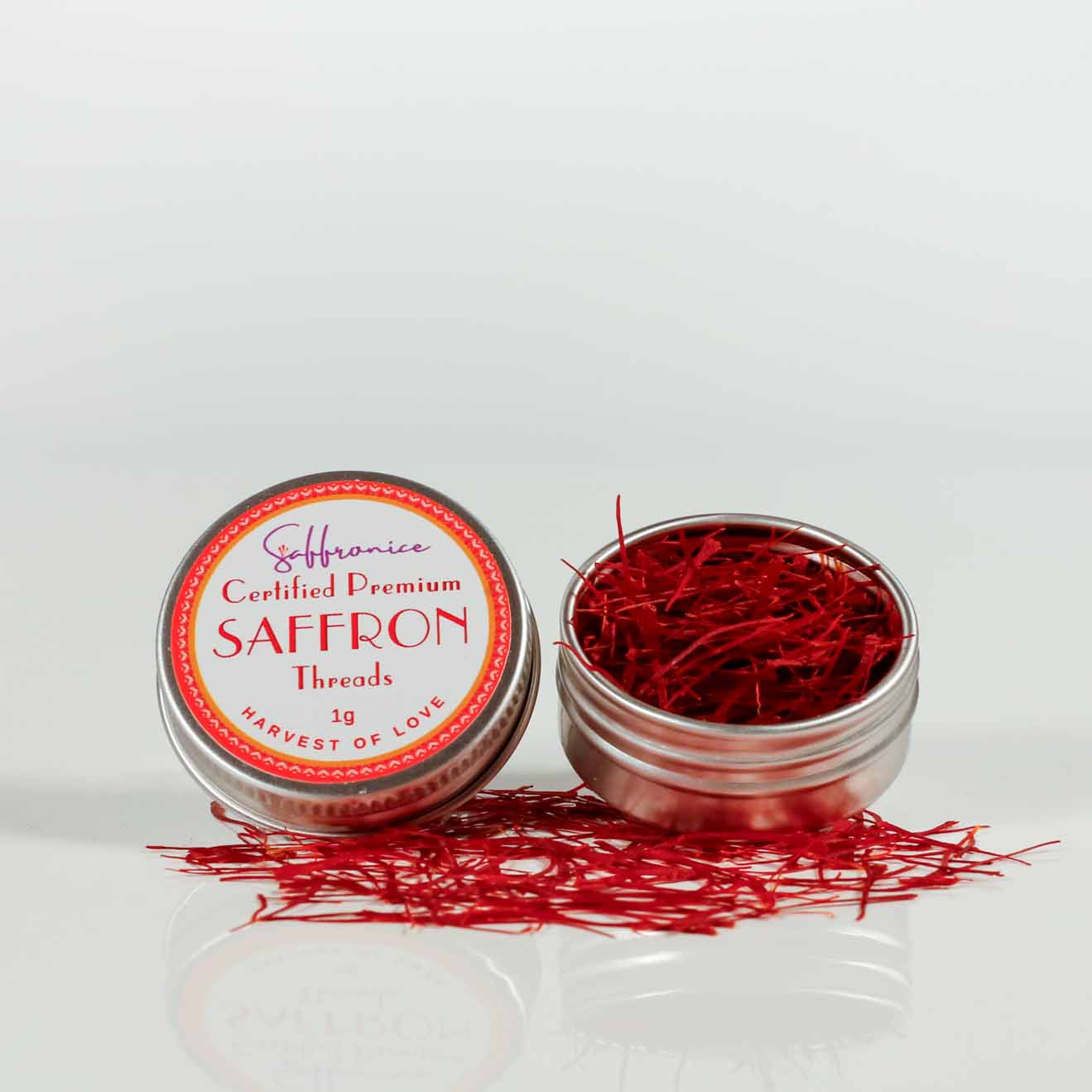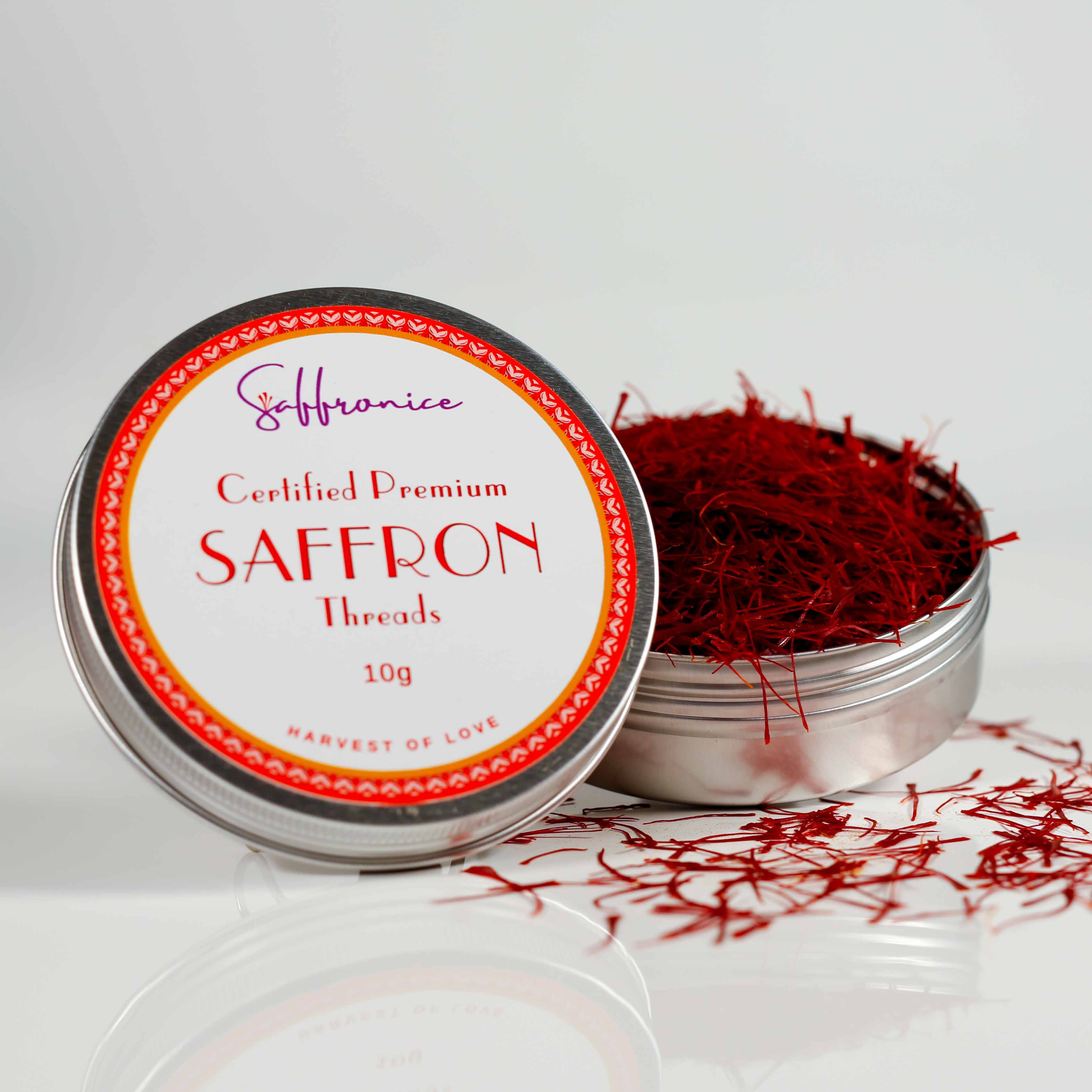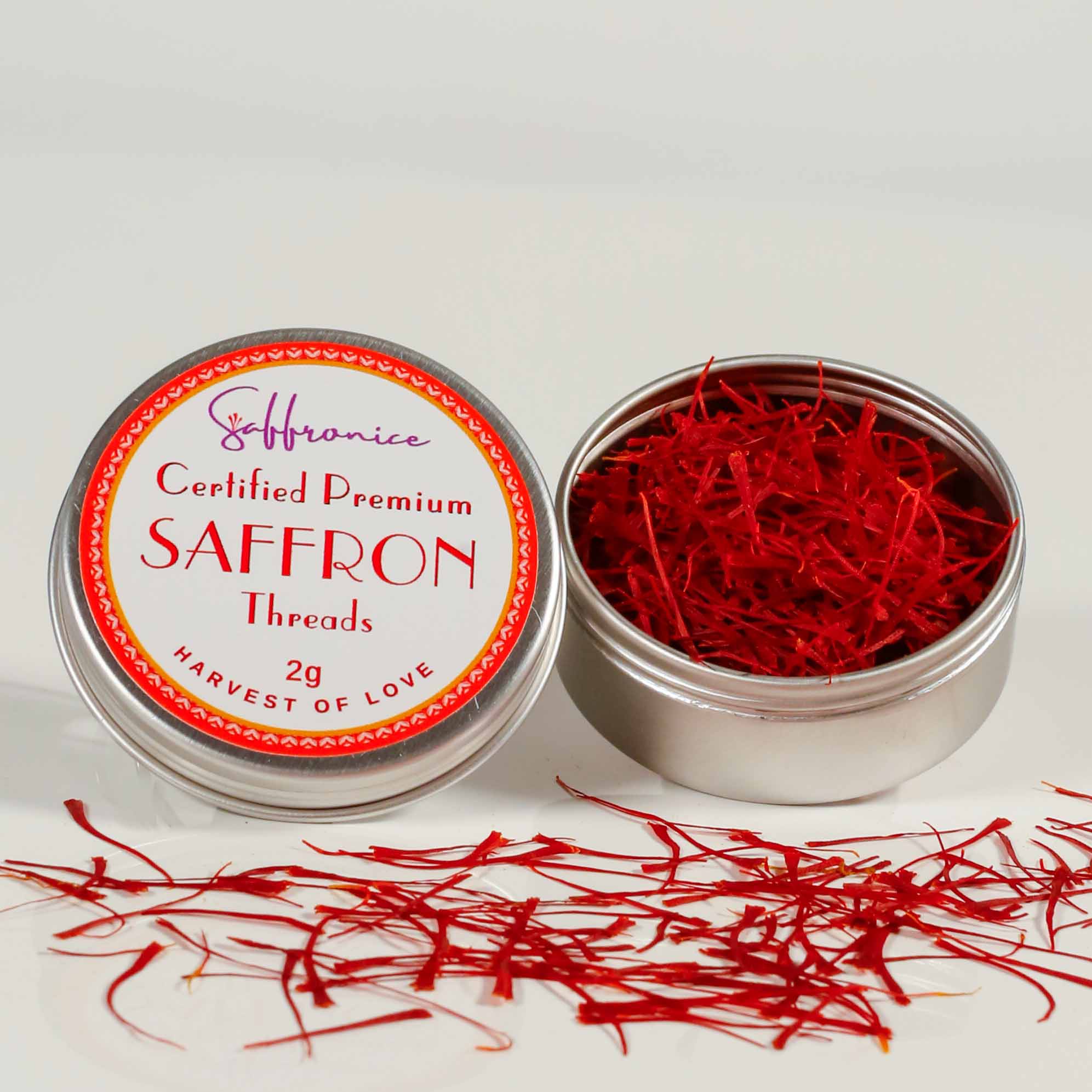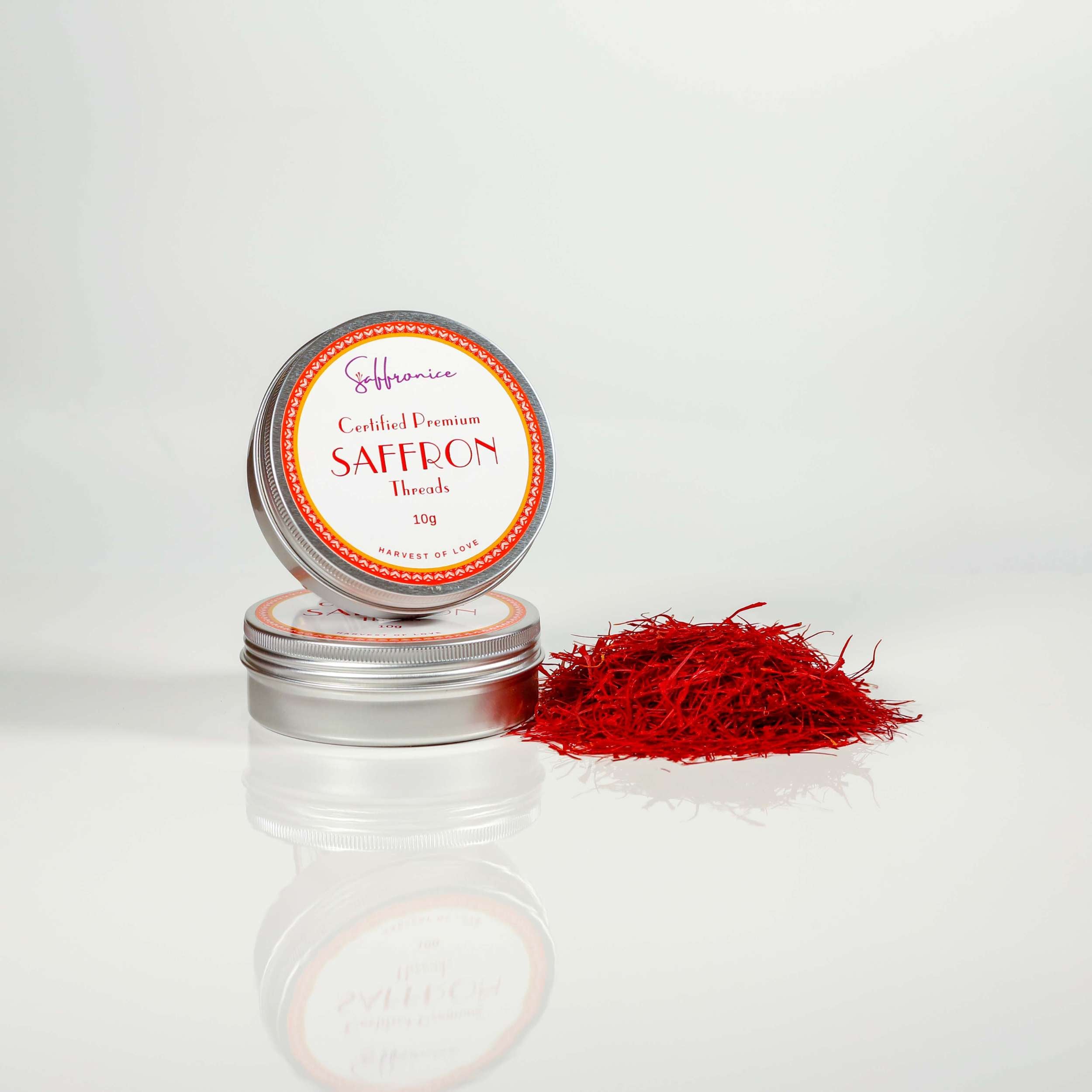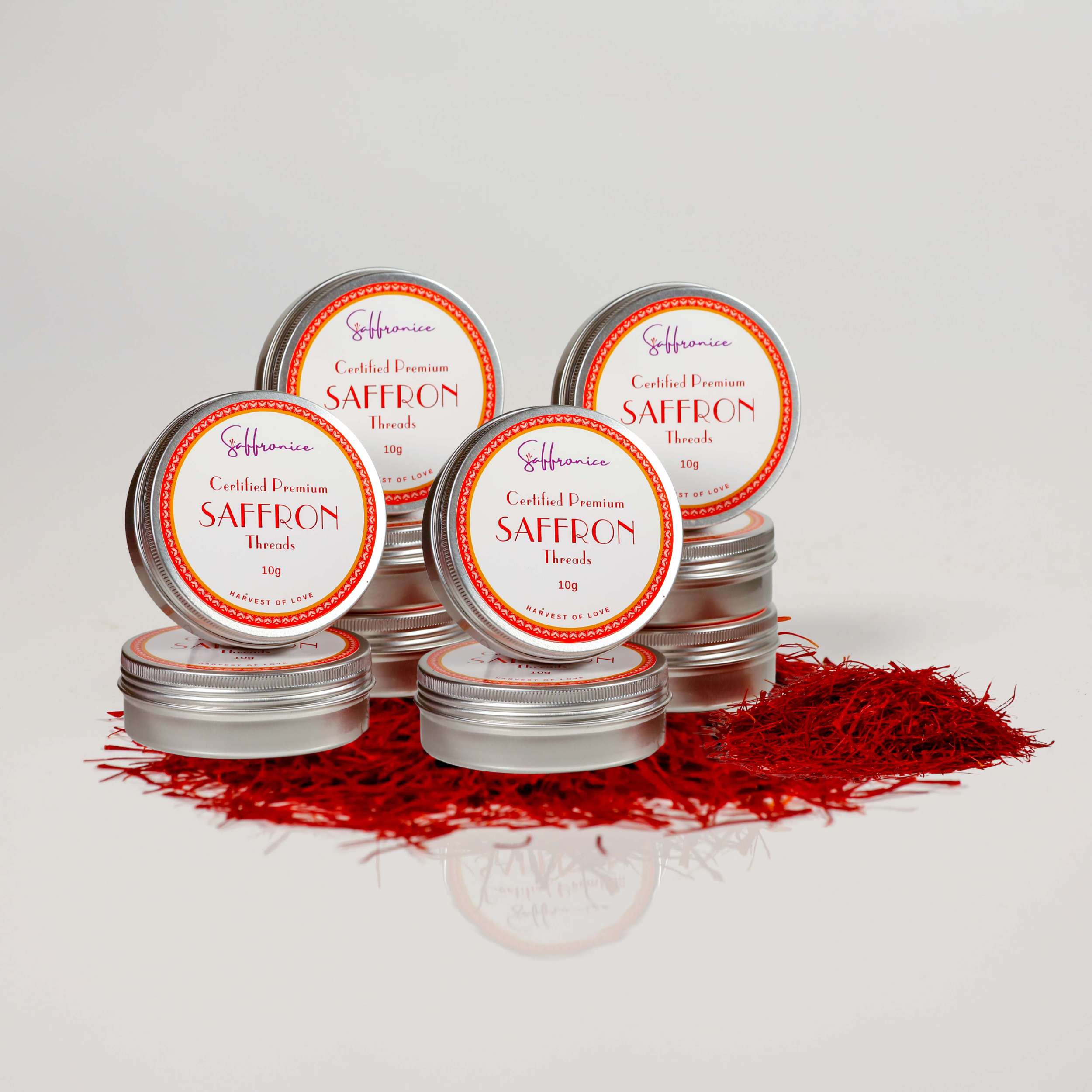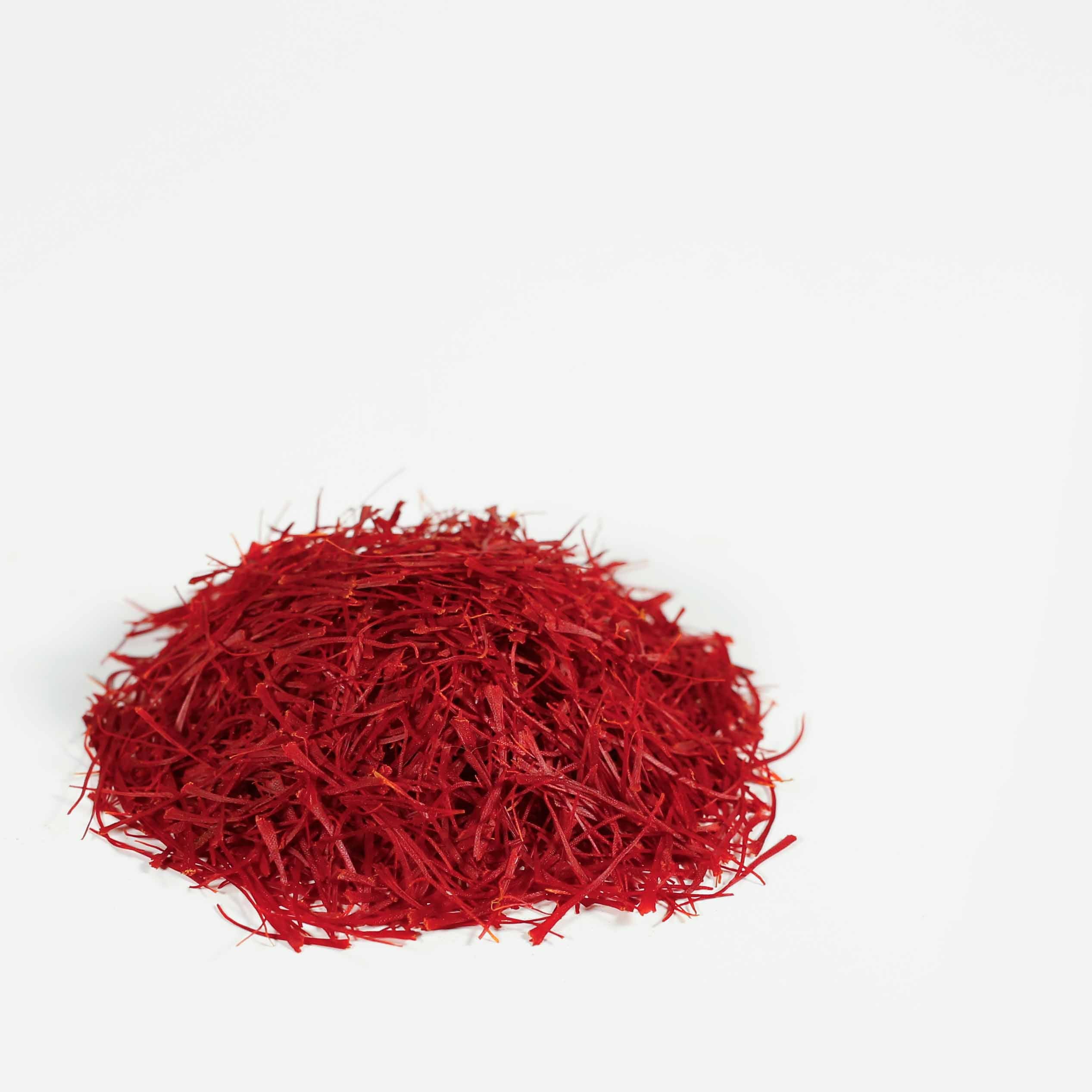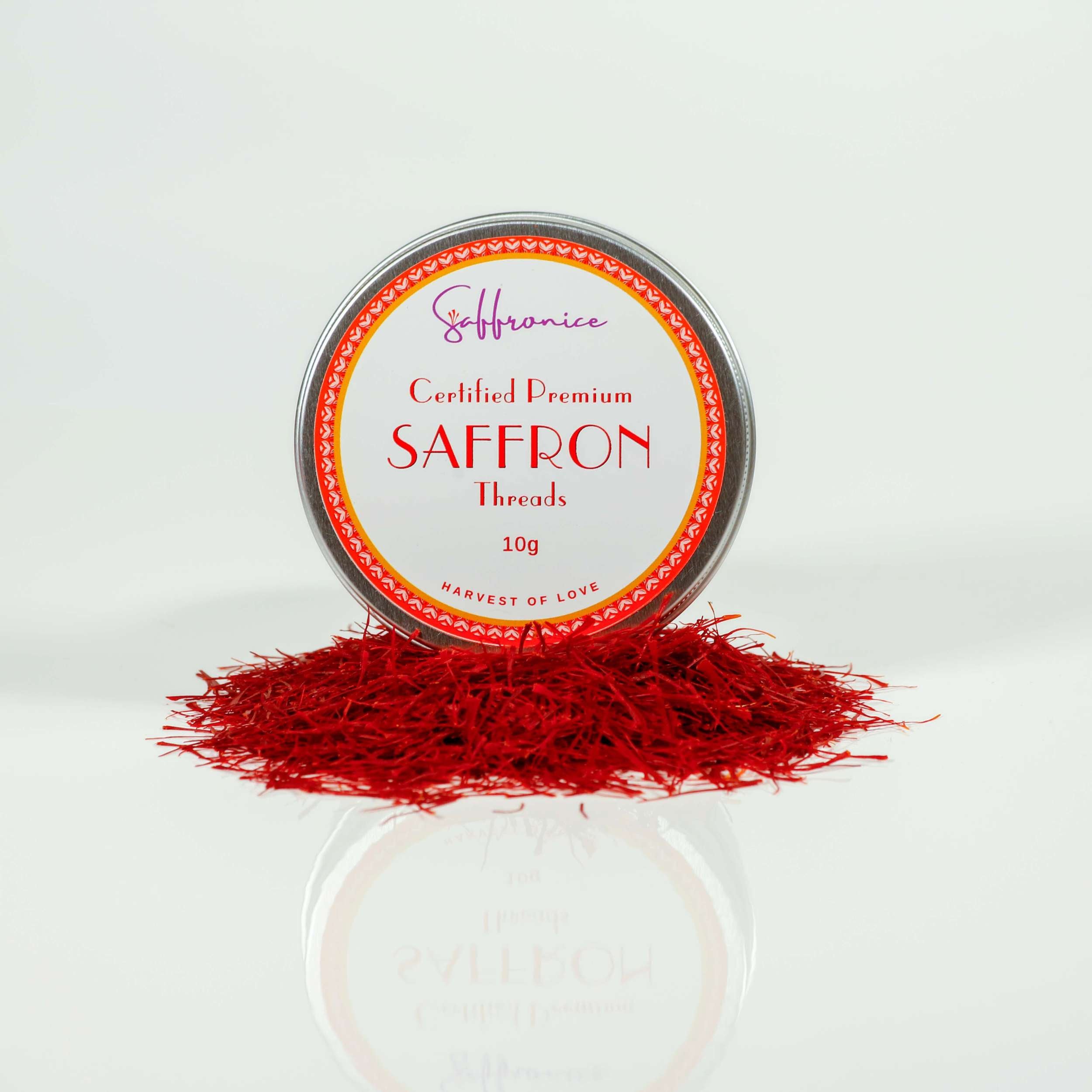Saffron, a golden thread of flavour, is a spice that delicately infuses dishes with a rich, floral aroma and a unique taste. This treasured spice, derived from the dried stigmas of the Crocus sativus flower, offers a world of culinary possibilities waiting to be explored, leaving many wondering what to use saffron for.
Key Takeaways
-
Proper preparation of saffron, such as blooming in liquids, ice, or grinding into powder, is essential to maximise flavour and aroma impact in dishes.
-
Saffron imparts a unique taste and colour to various dishes, evident in its role in enhancing rice meals, enriching desserts and drinks and lifting the profile of seafood and other savoury dishes.
-
To preserve Saffron's potency and ensure its efficacy in culinary applications, it should be stored in an airtight container within a cold, dark environment shielded from light and moisture.

Unlocking the Colour & Aroma: Best Practices for Using Saffron
Understanding the proper preparation of saffron is critical to unlocking its full flavour potential. Two effective methods for enhancing its flavour and aroma are 'blooming' the threads in liquid and grinding them into powder. While both forms have unique applications, the choice between saffron threads and ground saffron often depends on the desired outcome in a dish.
Saffron threads are visually striking and can add a luxurious aesthetic to culinary creations. They're best used in dishes where their appearance is as appreciated as their flavour. On the other hand, ground saffron is ideal for an immediate and uniform release of colour and aroma, making it perfect for dishes that require consistent colouring or for recipes like baked goods where powdered ingredients are preferred.
Choosing between saffron threads and ground saffron is not just about unlocking the spice's flavour but also about understanding the specific requirements of your dish. Each form offers a different way to infuse your culinary creations with Saffron's distinctive aroma and taste.

"Unlocking the Essence of Saffron: Steeping and Blooming Techniques"
Steeping Saffron in Liquids
Steeping saffron involves immersing its threads in hot or cold liquid to extract its vibrant colour and distinctive flavour. This process is simple yet crucial for maximising the spice's potential in various dishes. To steep saffron, start by:
-
Measuring the required amount of threads. A simple guide is a pinch (100mg) for a recipe for 2-3 adults.
-
Then, place them in your chosen liquid — water, broth, or milk- depending on your recipe.
-
For hot steeping, gently warm the liquid (without boiling) and add the saffron, allowing it to steep for 10 minutes.
-
For cold steeping, immerse the saffron in the cold liquid and let it sit for 15-20 Minutes or until it has released its colour.
The slow infusion process will draw out the Saffron's golden hue and aromatic essence, ready to enhance your culinary creations.

Blooming Saffron with Crushed Ice
Blooming saffron with crushed ice is a unique method that gently releases the spice's flavours and colours. This technique is particularly beneficial for dishes where a more subtle infusion is desired. Sprinkle the ice over saffron threads or saffron powder to bloom saffron using crushed ice. The fine particles of ice melt more quickly than an ice cube, gradually releasing the saffron's properties. As the ice melts at room temperature, it slowly absorbs the saffron's essence, resulting in a concentrated liquid that can be used in various recipes. This method not only preserves the delicate qualities of saffron but also provides a visually appealing way to prepare and present the spice. You can also refrigerate this concentrated liquid and use it within 7-10 days.
From Threads to Powder: Grinding Saffron
Grinding saffron threads into powder effectively intensifies their flavour and ensures uniform dispersion in your culinary creations. Traditionally, this is achieved using a mortar, pestle, or specialised saffron grinder. However, in the absence of these tools, a coffee grinder can serve as a suitable alternative.
-
It's essential to grind with care when using a coffee grinder for saffron.
-
Avoid over-processing, as excessive heat generated by the grinder can compromise the quality of saffron, mainly if it's intended for medicinal use.
-
After grinding, allow a brief pause for the saffron dust to settle before opening the grinder. This step is crucial to prevent the fine powder from becoming airborne and to ensure maximum collection.
-
The cleanliness of your grinder is also vital. Saffron is highly absorbent and can easily take on other aromas, so make sure your grinder is free from residual smells to avoid unintended flavour alterations.
Once you've ground the saffron, a good practice is to dissolve the powder in a few tablespoons of lukewarm water before adding it to your recipe. This pre-dissolution helps release the Saffron's full spectrum of flavour and colour into your dish.
Powdered saffron should be kept in an airtight container and refrigerated for storage. This method preserves its freshness and potency, ensuring its unique flavour remains intact for future culinary use for up to 8 weeks.

Culinary Canvas: Saffron in Rice Dishes
Saffron and rice form an exquisite culinary partnership, revered in various global cuisines. Saffron's subtle yet distinctive flavours are ideally suited to blend in rice dishes, allowing its aromatic essence to be fully appreciated without being overshadowed by other ingredients. Incorporating saffron into rice dishes typically involves preparing saffron as per previous steps by steeping or blooming saffron threads or powder, enabling the infusion of its vibrant golden colour and unique flavour.
Saffron enriches various dishes, from Persian saffron chicken and wild berries to Italian Saffron Risotto, Spanish Paella, and the delightful Saffron Rice Pudding. In each of these dishes, saffron lends its luxurious taste and colour. Across cultures, from Italy and Greece to the Middle East and the Indian Subcontinent, saffron gracefully adorns rice dishes, transforming them into culinary masterpieces with its golden elegance.

Saffron's Sweet Side: Desserts and Drinks
While saffron is a star in savoury dishes, its versatility also extends to the sweet realm. Whether in milk-based desserts, such as ice cream or panna-cotta, or harmonising with fruits in a cake, saffron adds a unique flavour and a splash of vibrant colour. Even traditional sweets like Jalebi, which hails from the Middle East, include saffron in their preparation.
Regarding beverages, saffron can be steeped in water like tea or infused into spirits for cocktails. An example of a saffron-infused beverage is Safran Sherbet, a floral, citrusy, sweet cordial that obtains its yellow hue from saffron threads. Now, let's further explore the magic saffron brings to desserts and drinks.

Indulgent Infusions: Saffron in Ice Cream
Saffron-infused ice cream is a decadent and fragrant dessert that often combines with flavours like rosewater and pistachio for an exotic treat. It's not just the unique flavour that makes saffron a favourite ice cream ingredient. Incorporating saffron into ice cream offers a soothing effect when combined with milk. It provides a range of health benefits, including:
-
Anti-inflammatory properties
-
Antioxidant properties
-
Improved digestion
-
Enhanced mood and mental health
So go ahead and indulge in this delicious and beneficial dessert!
One famous saffron-infused ice cream is Bastani Akbar Mashti, traditionally served between two thin wafers to make ice cream sandwiches. So, next time you think of a unique dessert, go for a scoop of saffron-infused ice cream.

Saffron Tea: A Soothing Elixir
Saffron tea is a soothing and aromatic beverage that can be enjoyed on its own or with added spices like ginger, cinnamon, and cardamom for a warming elixir. This golden brew is not just about the flavour; it's packed with health benefits. Saffron tea contains a high concentration of antioxidants and flavonoids, linked to enhanced cardiovascular health, digestive support, and the maintenance of neurological well-being.
Enjoying a cup of saffron tea indulges in a time-honoured tradition that dates back centuries. It's a comforting drink that bridges the gap between a cosy afternoon tea and a potent wellness beverage.

The Essence of Seafood: Saffron in Marine Delicacies
Saffron is the secret ingredient that many top chefs use to elevate their seafood dishes. Its subtle floral essence imparts a unique flavour to dishes like paella and Cioppino, the San Francisco fish stew. Even in a seafood stew's broth, saffron plays a significant role in flavouring, combined with white wine and aromatic vegetables, resulting in a sophisticated taste.
Its versatility extends to dishes containing mussels and shrimp, where saffron enhances the flavour profile of these popular seafood selections. Next time you prepare a seafood dish, consider adding a pinch of saffron for an unexpected twist.

Golden Garnish: Saffron in Soups and Sauces
Saffron is a golden garnish in soups and sauces, providing a subtle yet sophisticated saffron flavour and a vibrant hue. To effectively add saffron to these dishes, it's recommended to gently crush the saffron threads with your fingers and then cover them with a small amount of lukewarm water. Saffron contributes a subtle floral and earthy flavour to soups and sauces, enhancing their richness, fullness, and aroma.
Whether it's a comforting Laksa soup or a creamy white pasta sauce, saffron can elevate them to a gourmet level. It's also suitable for hot and cold sauce recipes, contributing to the depth of flavour and imparting a visually appealing golden hue to the dishes.

Saffron Beyond Borders: Global Spice Blends
Saffron transcends borders and is a critical ingredient in various global spice blends, showcasing its versatility and ability to harmonise with other flavours. Several international spice blends incorporating saffron include products from our mixed spices collection.
Whether Middle Eastern 'Za'atar', Indian' Garam Masala', or Moroccan' Ras el Hanout', saffron adds a unique flavour and colour to these blends. From savoury rice dishes to delicate desserts, these spice blends featuring saffron are used in renowned dishes of:
-
Persian cuisine
-
Indian cuisine
-
Spanish cuisine
-
Italian cuisine
Preserving Potency: Storing Saffron Properly
Proper storage is critical to preserving the full flavour and potency of saffron. Exposure to light, especially UV or continuous light, can deactivate saffron and diminish its potency. The most suitable containers for preserving saffron are tin containers, which shield them from light and moisture.
To maintain its colour, flavour, and potency for up to two years, saffron should be stored in an airtight container in a cool, dry, and dark environment, preferably in a refrigerator. Storing saffron properly ensures that every dish you create with this golden spice is as flavourful and aromatic as possible.

Crafting the Perfect Saffron-Infused Dish
Creating the perfect saffron-infused dish requires a harmonious blend of flavours, techniques, and a dash of creativity. This could mean infusing saffron in a warm liquid or grinding it into a fine powder and adding it directly to the dish during cooking for a concentrated flavour. From Rosewater and Saffron Ice Cream to Cioppino with Fennel and Saffron and Homemade Tagliatelle with Saffron Zucchini, saffron allows many culinary explorations.
Depending on the specific recipe and desired flavour intensity, a dish's recommended amount of saffron varies between 1 pinch and 1/2 teaspoon. With saffron, you don't just cook; you create magic in the kitchen.
Summary
In exploring the golden threads of flavour, we've seen how saffron's rich aroma and unique taste can be unlocked through proper preparation, how it shines in both savoury and sweet dishes, and how it can be preserved for long-lasting flavour. Whether you're a seasoned chef or a home cook, saffron offers limitless opportunities to elevate your culinary creations. So, why not add a pinch of saffron to your next dish and taste the magic for yourself?
Frequently Asked Questions
What is saffron most commonly used for?
Saffron is celebrated not only as a spice for its unique flavour and aroma in global cuisines, particularly in Indian, Moroccan, and Iranian dishes but also for its applications in herbal medicine. In culinary arts, it imparts a rich, golden hue and a distinctive, earthy flavour to various recipes. Additionally, saffron is a natural dye, lending a vibrant yellow colour to foods and textiles. In herbal medicine, saffron is valued for its potential health benefits, including mood enhancement and potential antioxidant properties, and as a traditional remedy for various ailments. This multifaceted spice thus plays a significant role in both the culinary and medicinal worlds.
What is the best way to use saffron?
For optimal use in dishes, add a pinch of saffron threads to lukewarm water, broth, or milk, depending on your recipe. This step, known as steeping, releases the spice's vibrant colour and rich flavour. Alternatively, try blooming saffron on crushed ice, gently coaxing its essence without heat. Once melted, this infused liquid is perfect for enhancing dishes like risotto, paella, and soups or even creating a rich base for sauces and desserts.
What is the primary use of saffron?
The primary use for saffron is as a spice and yellow food colouring in culinary applications, as well as a fragrance and dye in non-food products. Saffron is a versatile ingredient used in a variety of dishes and products.
What foods go well with saffron?
Saffron goes well with everything but pairs well with rice, carrots, onions, garlic, chicken, fish, lamb, and cheese. Try combining saffron with these ingredients to enhance your dishes.
How is saffron used in rice dishes?
To use saffron in rice dishes, infuse a pinch of saffron in 5 spoons of warm water and at the end of the cooking process or just before serving the rice, add the liquid to the rice and mix for the colour to spread and enhance its flavour and colour. This method allows the rice to absorb the Saffron's essence.
Learn more about Saffron Basic Knowledge


